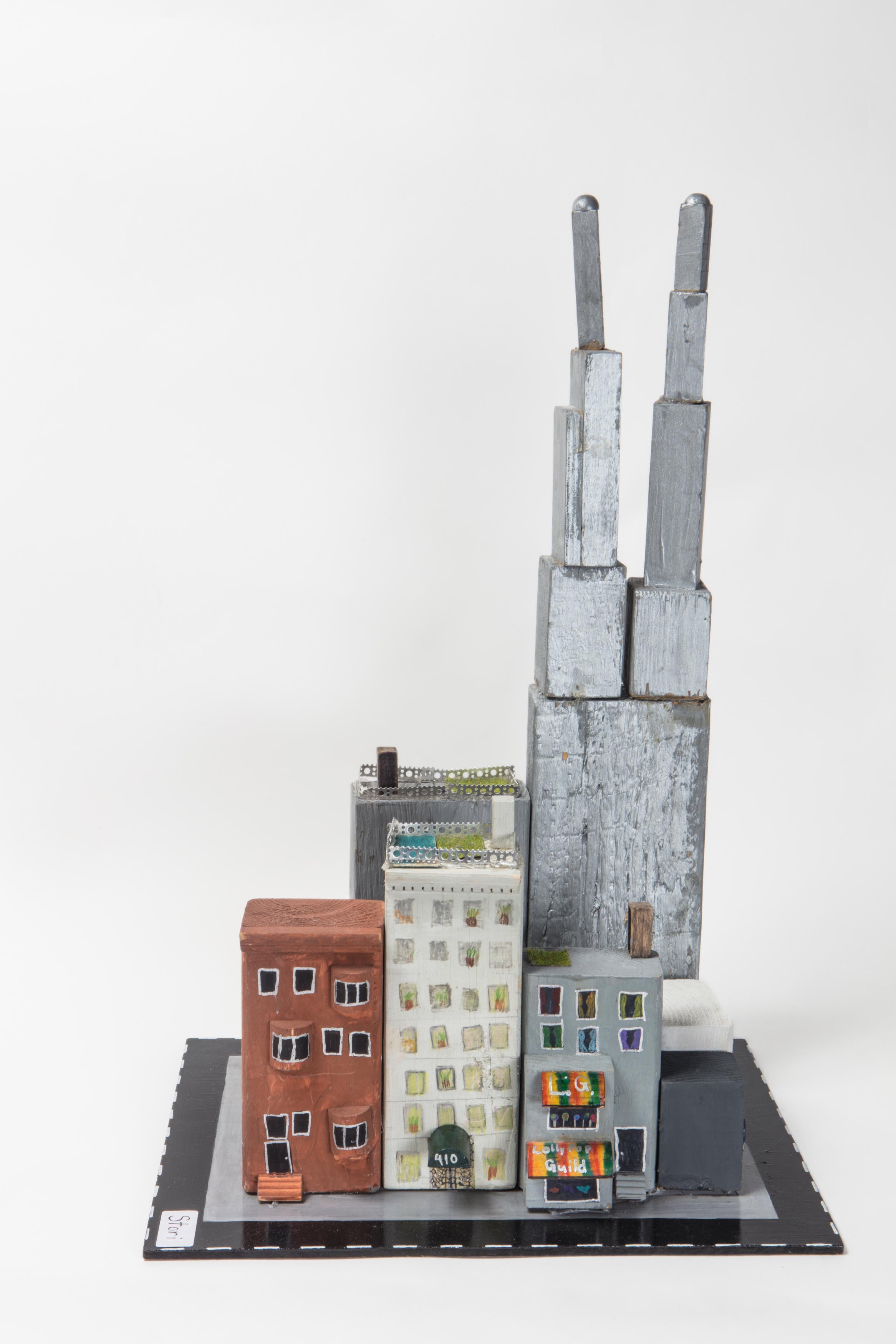36. Second Grade: City Blocks Panorama

Second graders design, build, and detail structures for individual city blocks, which are then assembled into an “island” displayed in the upper music room. This 20+ year project incorporates lessons on teamwork, zoning, architectural design and environmental sustainability.
City block by Stori Small ’24

Each winter the second grade embarks on the City Blocks Panorama, a study of urban planning, inspired by the 1964 World’s Fair Panorama at the Queens Museum. The project has evolved over 20+ years to incorporate lessons on teamwork, zoning, architectural detail, scale/proportion, and environmental sustainability.
A January visit to the Museum of the City of New York includes a discussion about the original Manhattan’s grid of 1811 and its subsequent evolution. We also learn the terms for the major zones of city planning: residential, commercial, institutional, industrial & manufacturing, and parks & open spaces.
Next we walk the streets of the school neighborhood examining architectural details of buildings with an educator from the preservationist group, Friends of the Upper East Side Historic District.
Students brainstorm a list of building types in New York City, sort them into “needs” and “wants,” and then into zoning categories. In small groups, they negotiate construction assignments for “needs” and “wants” in their small “neighborhood.” The collaboration and compromise involved draw upon the children’s growing teamwork skills.
The children spend two months designing, building, and detailing structures for their individual city blocks. Small blocks of wood, paint, glue, pens, and collage materials become apartment buildings, schools, hospitals, banks, houses of worship, movie theaters, and more. Recently, we’ve added colorful LED lights corresponding to the planning zones.
Every second grader makes a city block. Before spring break, the blocks are assembled into an “island” that runs the length of the upper music room. The exhibit is a must-see event for everyone at First Program!
—Deborah Semel Bingham ’82, Second Grade House Advisor
